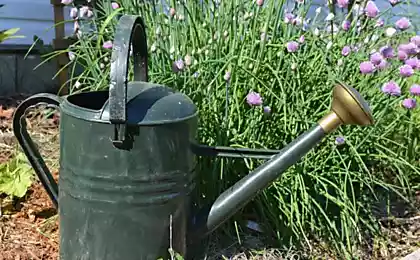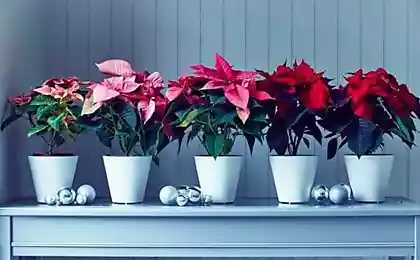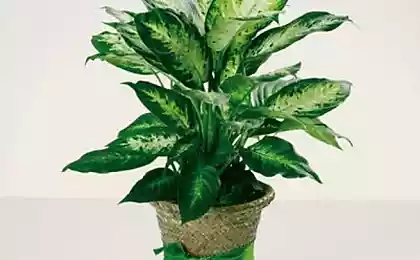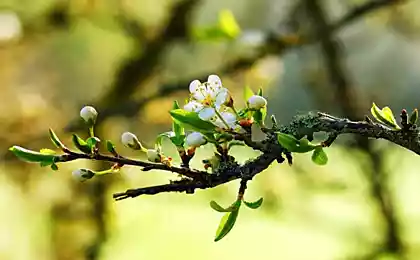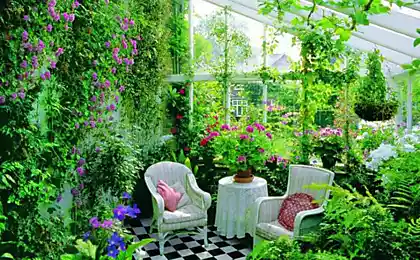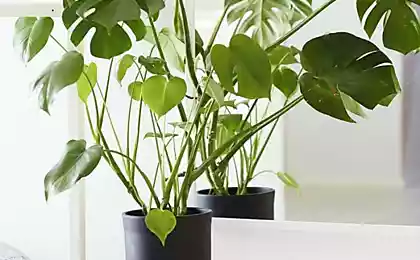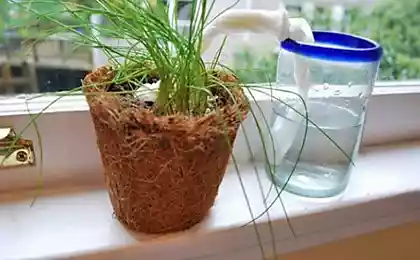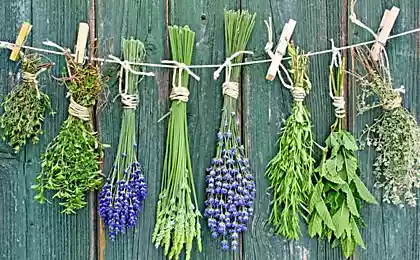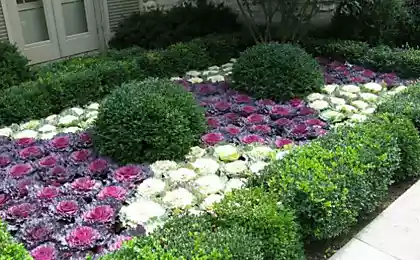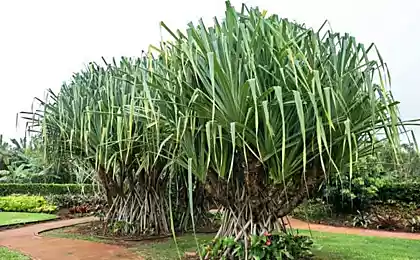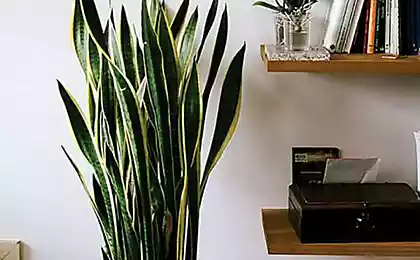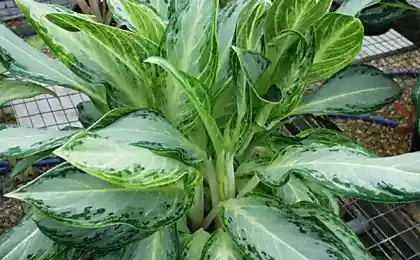959
How to root cuttings from houseplants
Most houseplants can be propagated vegetatively:

At first glance – everything is simple, cut off the stem, stuck it in the ground and wait, when he will put down roots. In fact, such a focus is not always and not all. This requires a level of experience and ability.
Some people have everything planted grows and flourishes, they are in England called the "green hands". Most of us sometimes manage to root a cutting and grow it from a plant, but most of the planting material rots or dries.
What you need to know about the rooting of cuttings in order to propagate your favorite plants?
WHAT YOU NEED TO DO
Before proceeding to the harvesting of cuttings and their rooting, it is important to decide in such matters:
Some indoor plants easily and quickly take root. No problems with the rooting of Impatiens, pelargonium zonal, tradescantia, Coleus. Pelargonium grandiflorum is more capricious. Almost always successfully propagated by cuttings ficus and begonias. Azalea and Gardenia to root hard. If no experience, it is better to work-out on the he is not capricious and easily rooted home flowers.
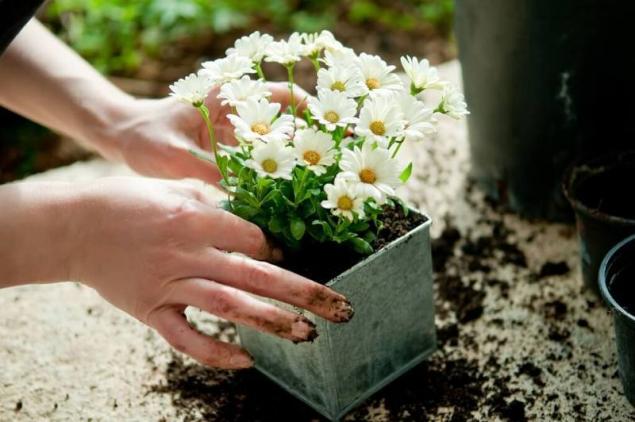
HOW TO CUT THE CUTTINGS
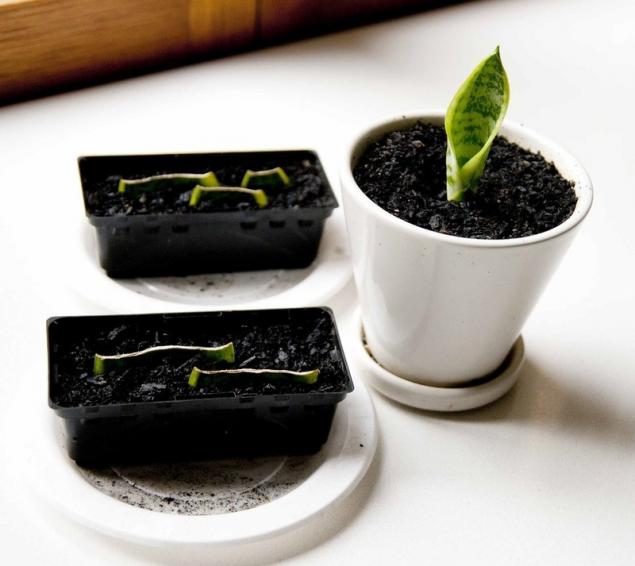
The easiest method of propagating house plants is to cut off a sprig, put it in water and wait for roots. But not all species appear in such conditions the roots. A after a while simply rot away. The water is usually propagated from the Saintpaulia, Impatiens, zonal geraniums, tradescantia, ivy, Coleus.
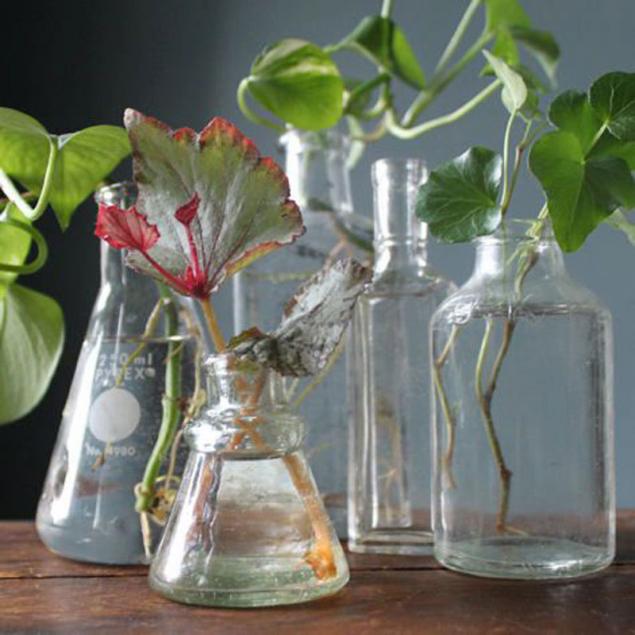
What is rooting? In any small glass or plastic container. In the glass, for example. It is noteworthy that the container made of dark glass, the roots appear faster. The cuttings are placed so that the lower part was submerged shallow. To form roots need oxygen, they appear at the border of water and air. The water level in the glass should be such that the ends of the cuttings were in water, but most of them are above the water level.
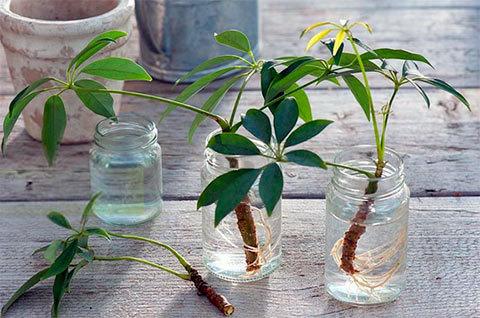
What kind of water to use? Usual, from-under the crane. Some suggest to take only boiled, it contains no microbes, but in fact they are recorded immediately as put the stalk. The plant cannot be sanitized, not destroy it. In addition, in the ordinary air of the apartment a variety of microorganisms is more than enough. Useful melt-water does not contain salts and is effective for rooting.
Do I need to change the water in the container with the cuttings? No, it is not necessary to change the water in the cuttings, and you only need to refill when needed. Often they die after water changes. Probably, in the glass formed a kind of sustainable environment of the waste products of plants that promotes root growth. Leaves Saintpaulia, cuttings Passiflora, have roots sometimes die after changing the water. Place in water a tablet of activated charcoal to keep the putrefactive processes.
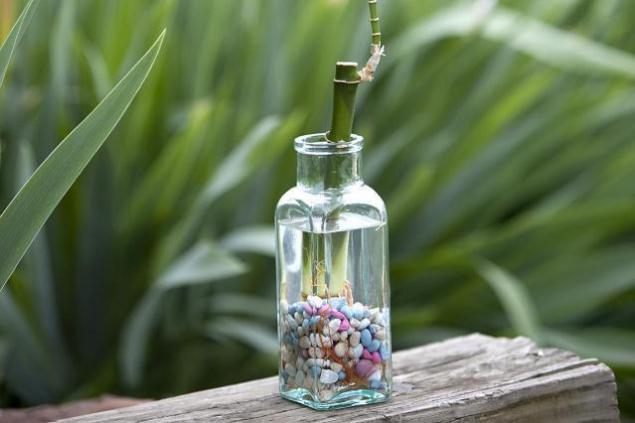
How many cuttings can be placed in one glass? A little, 1 or 2. Capricious than the plant, the less. In a large mass of cuttings is usually all die. We should start to rot, as this process will affect all the others.
ROOTING IN THE SOIL
Some types of plants do not give the roots in water. Unable to stand it a month and not to let any of the spine, while in the ground they will appear next week. The General rule is that plants of swamps and tropical rainforests easily rooted in water, species from arid areas are better planted in the ground.
In the ground roots of Petunia, pelargonium grandiflorum, fuchsia, begonias, hydrangea, hibiscus.
THE SOIL FOR ROOTING
What soil to use for rooting cuttings? Loose, well able to hold moisture, with neutral acidity. To most cultures most often used is a simple mix: peat mixed with coarse sand. Or other inert soil, not prone to decay. To peat, you can add perlite and vermiculite, coconut fiber. Useful sphagnum moss, it has disinfectant properties and holds water well. Too loose soil will not dry quickly.
The sterility of the soil. The soil for rooting cuttings of houseplants should not contain fungal infections and insect pests. Many flower lovers garden soil steamed, deep fried or frozen it. Safer just to buy ready-made soil in garden centers and add the roasted sand. This purchased land is treated with fungicides and insecticides, which protect the plants for some time.
The acidity of the soil. The acid reaction of the soil influences rooting. Usually take in the store the ground with a neutral acidity. Most types of potted plants in it takes root best. Hydrangeas need acidic soil, they take root cuttings are most effective in soil with a slightly acid reaction. The General rule for most plants is: acidity of the soil for rooting should be similar to that required for adult plants of this species, but a little closer to neutral.
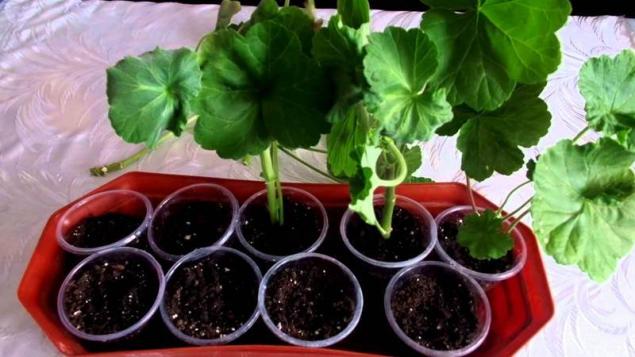
UTENSILS FOR ROOTING are Good for rooting cuttings, disposable plastic cups. If a single stalk rot, the rot will not be transferred to other cuttings. Through the transparent walls can be seen emerging the roots. In the bottom of the Cup make sure the drain hole.
At the bottom for free drainage of excess water, it is desirable to put a little perlite or foam pieces.
Less glasses consider them a small amount. If you missed any of the Cup when watering, the cuttings can dry out.
Convenient for rooting cuttings of a large number of regular boxes of seedlings or special pallets (cassettes, trays) cells. In the boxes, the moisture is distributed more evenly, the smaller cuttings are located and behind them easier to maintain.
For small cuttings is the most convenient option considered plastic food containers with transparent lid. They are tough enough, the lid opens easily when ventilating, it is easy to make drainage holes.
When choosing cookware for rooting are guided by such rules:
The boxes are usually planted cuttings of citrus, myrtles, oleanders. The crowns of these plants need shaping and pruning, then there is a lot of branches, it is suitable for grafting. Not all of them will survive, but some of them will take root.
HOW to PLANT a CUTTING of the Matter seems simple. At first glance. In some plants the roots grow along the entire length embedded in the soil of the stem. The deeper you plant, the more roots will be. In others, they appear only out of the thickening on the cut and from there will grow new shoots. This place should not be too deep from the soil surface.
Universal method consider planting cuttings are not strictly vertical, but oblique, at an angle of 45 degrees. And then deeply is the lower end of the cutting, and quite a large part of the shoot is in contact with the soil.
Some plants (epipremnum, syngonium, monstera) a large distance between nodes, length of the cutting can be 20-30 cm They are unstable when planting in the ground. Convenient high plastic cups or bottles with the cut off top. The soil sprinkled on the bottom of the vessel, and the walls serve as a bearing.
Some potted vines that can grow aerial roots, they root easily in contact with the ground. Cuttings ceropegia wood, philodendron possible to root if you just put them in moist soil, crushing stones in the nodes and regularly sprayed.
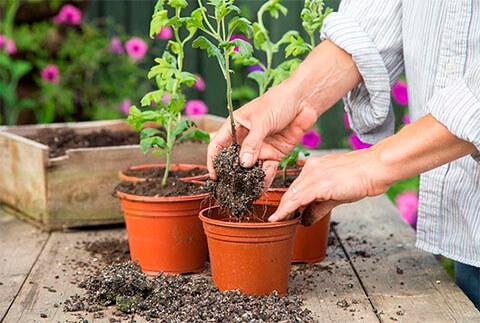
ROOTING STIMULANTS
Some gardeners before planting the cuttings soaked them in a solution of IAA or other stimulator of root formation. These substances contribute to regeneration of plants, stimulate the formation of roots on cuttings, to hasten root formation in seedlings and adult plants, enhance the growth of adventitious roots. The drugs are different. Cuttings or soaked in the solution, or sprinkle the powder, or watered the roots strictly according to instructions.
These stimulants of rooting allow you to get new copies from cuttings, even the most sophisticated in the reproduction of plants.
CARE OF CUTTINGS
From the proper care of planted cuttings of houseplants depends 90% success rooting. Care of cuttings depends largely on the plant species, but there are common rules for all.
MOISTURE RETENTION AND WATERING
Do you need film? Almost always recommend rooting the shoots to protect from drying top cover film or glass, leaving a small opening for ventilation. Planted in cups cuttings enough top wear a small plastic bag.
This requirement is not true for all plants, but not hurt, especially in the early days. Succulent plants, as a rule, does not cover.
Important! Be sure to regularly ventilate! How often? If cool enough 1 time per day to open for half an hour, if it's hot and a lot of water droplets on the film 3 times for 10-15 minutes. Excess condensate cuttings rot easily. Frequent spraying speeds up rooting, but plants with hairy leaves or shoots spray is not recommended.
When the first roots, the film can be removed. Spraying continues.
Trim the leaves? Cuttings of plants with large leaves evaporate a lot of moisture, the soil dries quickly. Leaf blade cuttings, it is useful to cut in half or by 2/3. So do lemons cuttings, potted roses, hibiscuses, gardenias. Thick fleshy leaves are pruned. And they are so good to keep the moisture, and when damaged begin to rot.
As to water? Closed film, the cuttings are watered infrequently, watching only that the soil was slightly damp. To water better soft defend water at room temperature or a few degrees warmer. When roots appear, the plant begins to absorb more moisture from the soil and most of it to evaporate, watering increase, and the shelter is removed.
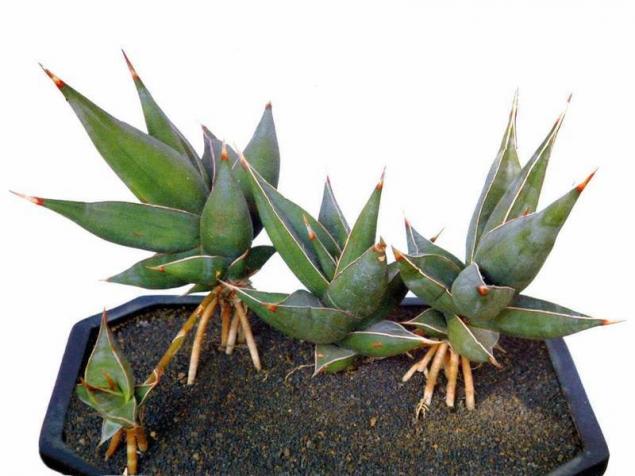
TEMPERATURE MODE
The temperature factor for most plants is the most important. Sliced shoots are actively developing in the warmth. Optimum temperature is 22-28°C. Moreover, not only the air needs to be warm, but the soil. In the winter on cold windowsills rooting even he is not capricious most plants cannot.
Tropical plants require higher temperatures, many representatives of subtropical and temperate climate and at 20 degrees to form roots. Very heat-loving exotic species rooted only with the bottom heating! For this purpose, the container of cuttings you can put on a warm windowsill over a radiator or buy a special box for seedlings with Underfloor heating.
When very hot, it is too bad! If the temperature is above 30 degrees most of the cuttings die.
As soon as I noticed the appearance of the roots (very convenient in this respect, the transparent container), or the beginning of the growth of the new sheet, the temperature is preferably lowered to a normal room.
Most sites dedicated to indoor plants, I advise you to root cuttings in spring or late summer. These tips are correct for most species. And often it's not that the roots don't grow. Grow! But during these periods it is easier to provide the right temperature and light conditions without any special tricks.
LIGHTING
Sunlight stimulates growth. It is a mistake to put the cuttings in the shade, where the sun hardly penetrates. Light should be plenty, but it needs to be diffused. In the heat of summer it is better not to hold in the midday sun to prevent overheating. But the morning and the sunset rays will benefit, especially the cuttings are sun-loving species (hibiscus, gloxinia, pelargonium).
Some types of plants take root cuttings without leaves (grape, barberry), they can be kept in a shaded place. The reason for this is that if the stalk were harvested in the autumn, in the period when the plant was not leaves, it contains a certain amount of IAA that stimulate the formation of roots.
TRANSPLANTING YOUNG PLANTS
These seedlings should be transplanted into individual pots. For many plants this step is the most difficult. Many species do not tolerate root damage. Others do not like changes of temperature or soil.
How to transplant? The rule is simple – rooted cuttings transplanted only handling, not shaking the earth, trying not to damage the weak roots.
When to transplant? In cups rooted shoots are transplanted when it is seen that the roots are well covered lump of earth. If the walls are not transparent, then transplanted when the drain appeared roots.
The cuttings in the common box are more difficult to separate from each other, they are usually transplanted when they are touched in growth, will give new worksheet. The delay with transfer of a single cell or Cup especially will not damage, only slightly slow down the development of plants, while in the box roots so intertwined that they are difficult to separate.
How to adapt? Abrupt change of conditions can ruin so hard the resulting plants. If the plant is moved to another location or outdoor air before transplanting, it is necessary to accustom to the new environment. It is removed from the shelter, transferred to another place first for a few hours, then time increase. The plants should get used to a lower temperature, and other lighting.
UNUSUAL WAYS OF PROPAGATION
There are rather exotic, but effective, ways of rooting. Often they allow you to root even difficult to cuttings of plants.
For example, in potatoes. This tuber is washed, it removes all the eyes, and done a hole is inserted the right stalk. Then the tuber is dug in the ground, and the handle is covered with a glass jar or plastic and watered regularly. The cuttings supplied a large amount of nutrients and actively take root, and plants to further grow and develop well. Even capricious roses so to root!
Or, another way: a twig stuck in a piece of special floristic sponge to extend the life of cut flowers. She is a long time retains moisture and is treated with a special antibacterial substances. For example, in the sponge well rooted fuchsia.
Also interesting: plants-healers
The most unpretentious house plants that clean the air
Burrito method has worked well for rose. This way you can root cuttings with a thickness of not less than a pencil. Take cuttings with 3-4 buds, remove all the leaves. Treated with root stimulant and several pieces wrapped in wet newspaper. Packed in paper cuttings put in a dark plastic bag and leave for 3 weeks at a temperature of 14-18 degrees. Well suited the basement. After the specified time they come out, carefully remove the newspaper. If on the branches appeared the roots, they are planted one in a pot so that above the surface stood a the top Bud. Pot covered with foil to reduce evaporation. The temperature now should be above 23-25 degrees.published
Source: greendom.net/articles/434-kak-ukorenyat-cherenki.html
- cuttings,
- layering,
- the children,
- by dividing adult plants.

At first glance – everything is simple, cut off the stem, stuck it in the ground and wait, when he will put down roots. In fact, such a focus is not always and not all. This requires a level of experience and ability.
Some people have everything planted grows and flourishes, they are in England called the "green hands". Most of us sometimes manage to root a cutting and grow it from a plant, but most of the planting material rots or dries.
What you need to know about the rooting of cuttings in order to propagate your favorite plants?
WHAT YOU NEED TO DO
Before proceeding to the harvesting of cuttings and their rooting, it is important to decide in such matters:
- Find out what kind of plant, whether it can be propagated by cuttings and read tips on how to do it.
- To choose the right and cut off the stalk.
- Prepare the dishes for rooting and suitable for this plant soil.
- Treat with root stimulant if you need it.
- To put the handle and to properly care for it.
Some indoor plants easily and quickly take root. No problems with the rooting of Impatiens, pelargonium zonal, tradescantia, Coleus. Pelargonium grandiflorum is more capricious. Almost always successfully propagated by cuttings ficus and begonias. Azalea and Gardenia to root hard. If no experience, it is better to work-out on the he is not capricious and easily rooted home flowers.

HOW TO CUT THE CUTTINGS
- For rooting cuttings taken from a healthy instance. Affected by pests and fungal diseases of plants, you first need to cure.
- Cut the cuttings with a sharp knife, woody shoots with secateurs. Thin and delicate stems with a pair of scissors to cut impossible, though it seems comfortable — the cut is pinched, the tissue injured and the shaft then quickly rots.
- The cuttings are cut small, should be 3-4 pages. The length of cuttings from different plants may be different, it depends on the distance between the sheets. Some species of plants rooted better than apical cuttings, most equally the apical and lateral.

- The bottom cut should be just below the node. The stems of many plants easily break off at the internode is the best choice for office. Even better, if the stalk with the "promenade" — the place where the branch grows from the main stem. If rooting in water, you can see that the roots of some plants (Impatiens or zonal pelargonium, for example) appear along the entire length of the stalk is immersed in water. In others, they grow only on the lower edge. There are plants in which the roots appear only from the host.
- The lower leaves are removed immediately when in contact with damp soil or water, they rot, hitting the handle itself.
- In some plants the leaf area is large, planted the cuttings to evaporate a lot of water. Leaf blades partially cut (by one third or half).
- If the stalk with buds or flowers, you must delete them, otherwise the cuttings to form roots may simply not enough forces.
- Fresh cuttings are not recommended immediately be placed in water or in soil. Most houseplants they need a few hours to lie in the open air before planting.
The easiest method of propagating house plants is to cut off a sprig, put it in water and wait for roots. But not all species appear in such conditions the roots. A after a while simply rot away. The water is usually propagated from the Saintpaulia, Impatiens, zonal geraniums, tradescantia, ivy, Coleus.

What is rooting? In any small glass or plastic container. In the glass, for example. It is noteworthy that the container made of dark glass, the roots appear faster. The cuttings are placed so that the lower part was submerged shallow. To form roots need oxygen, they appear at the border of water and air. The water level in the glass should be such that the ends of the cuttings were in water, but most of them are above the water level.

What kind of water to use? Usual, from-under the crane. Some suggest to take only boiled, it contains no microbes, but in fact they are recorded immediately as put the stalk. The plant cannot be sanitized, not destroy it. In addition, in the ordinary air of the apartment a variety of microorganisms is more than enough. Useful melt-water does not contain salts and is effective for rooting.
Do I need to change the water in the container with the cuttings? No, it is not necessary to change the water in the cuttings, and you only need to refill when needed. Often they die after water changes. Probably, in the glass formed a kind of sustainable environment of the waste products of plants that promotes root growth. Leaves Saintpaulia, cuttings Passiflora, have roots sometimes die after changing the water. Place in water a tablet of activated charcoal to keep the putrefactive processes.

How many cuttings can be placed in one glass? A little, 1 or 2. Capricious than the plant, the less. In a large mass of cuttings is usually all die. We should start to rot, as this process will affect all the others.
ROOTING IN THE SOIL
Some types of plants do not give the roots in water. Unable to stand it a month and not to let any of the spine, while in the ground they will appear next week. The General rule is that plants of swamps and tropical rainforests easily rooted in water, species from arid areas are better planted in the ground.
In the ground roots of Petunia, pelargonium grandiflorum, fuchsia, begonias, hydrangea, hibiscus.
THE SOIL FOR ROOTING
What soil to use for rooting cuttings? Loose, well able to hold moisture, with neutral acidity. To most cultures most often used is a simple mix: peat mixed with coarse sand. Or other inert soil, not prone to decay. To peat, you can add perlite and vermiculite, coconut fiber. Useful sphagnum moss, it has disinfectant properties and holds water well. Too loose soil will not dry quickly.
The sterility of the soil. The soil for rooting cuttings of houseplants should not contain fungal infections and insect pests. Many flower lovers garden soil steamed, deep fried or frozen it. Safer just to buy ready-made soil in garden centers and add the roasted sand. This purchased land is treated with fungicides and insecticides, which protect the plants for some time.
The acidity of the soil. The acid reaction of the soil influences rooting. Usually take in the store the ground with a neutral acidity. Most types of potted plants in it takes root best. Hydrangeas need acidic soil, they take root cuttings are most effective in soil with a slightly acid reaction. The General rule for most plants is: acidity of the soil for rooting should be similar to that required for adult plants of this species, but a little closer to neutral.

UTENSILS FOR ROOTING are Good for rooting cuttings, disposable plastic cups. If a single stalk rot, the rot will not be transferred to other cuttings. Through the transparent walls can be seen emerging the roots. In the bottom of the Cup make sure the drain hole.
At the bottom for free drainage of excess water, it is desirable to put a little perlite or foam pieces.
Less glasses consider them a small amount. If you missed any of the Cup when watering, the cuttings can dry out.
Convenient for rooting cuttings of a large number of regular boxes of seedlings or special pallets (cassettes, trays) cells. In the boxes, the moisture is distributed more evenly, the smaller cuttings are located and behind them easier to maintain.
For small cuttings is the most convenient option considered plastic food containers with transparent lid. They are tough enough, the lid opens easily when ventilating, it is easy to make drainage holes.
When choosing cookware for rooting are guided by such rules:
- If the plant does not tolerate transplanting – take cups;
- If a lot of cuttings, the survival rate of their low – pick up the crates or pallets.
The boxes are usually planted cuttings of citrus, myrtles, oleanders. The crowns of these plants need shaping and pruning, then there is a lot of branches, it is suitable for grafting. Not all of them will survive, but some of them will take root.
HOW to PLANT a CUTTING of the Matter seems simple. At first glance. In some plants the roots grow along the entire length embedded in the soil of the stem. The deeper you plant, the more roots will be. In others, they appear only out of the thickening on the cut and from there will grow new shoots. This place should not be too deep from the soil surface.
Universal method consider planting cuttings are not strictly vertical, but oblique, at an angle of 45 degrees. And then deeply is the lower end of the cutting, and quite a large part of the shoot is in contact with the soil.
Some plants (epipremnum, syngonium, monstera) a large distance between nodes, length of the cutting can be 20-30 cm They are unstable when planting in the ground. Convenient high plastic cups or bottles with the cut off top. The soil sprinkled on the bottom of the vessel, and the walls serve as a bearing.
Some potted vines that can grow aerial roots, they root easily in contact with the ground. Cuttings ceropegia wood, philodendron possible to root if you just put them in moist soil, crushing stones in the nodes and regularly sprayed.

ROOTING STIMULANTS
Some gardeners before planting the cuttings soaked them in a solution of IAA or other stimulator of root formation. These substances contribute to regeneration of plants, stimulate the formation of roots on cuttings, to hasten root formation in seedlings and adult plants, enhance the growth of adventitious roots. The drugs are different. Cuttings or soaked in the solution, or sprinkle the powder, or watered the roots strictly according to instructions.
These stimulants of rooting allow you to get new copies from cuttings, even the most sophisticated in the reproduction of plants.
CARE OF CUTTINGS
From the proper care of planted cuttings of houseplants depends 90% success rooting. Care of cuttings depends largely on the plant species, but there are common rules for all.
MOISTURE RETENTION AND WATERING
Do you need film? Almost always recommend rooting the shoots to protect from drying top cover film or glass, leaving a small opening for ventilation. Planted in cups cuttings enough top wear a small plastic bag.
This requirement is not true for all plants, but not hurt, especially in the early days. Succulent plants, as a rule, does not cover.
Important! Be sure to regularly ventilate! How often? If cool enough 1 time per day to open for half an hour, if it's hot and a lot of water droplets on the film 3 times for 10-15 minutes. Excess condensate cuttings rot easily. Frequent spraying speeds up rooting, but plants with hairy leaves or shoots spray is not recommended.
When the first roots, the film can be removed. Spraying continues.
Trim the leaves? Cuttings of plants with large leaves evaporate a lot of moisture, the soil dries quickly. Leaf blade cuttings, it is useful to cut in half or by 2/3. So do lemons cuttings, potted roses, hibiscuses, gardenias. Thick fleshy leaves are pruned. And they are so good to keep the moisture, and when damaged begin to rot.
As to water? Closed film, the cuttings are watered infrequently, watching only that the soil was slightly damp. To water better soft defend water at room temperature or a few degrees warmer. When roots appear, the plant begins to absorb more moisture from the soil and most of it to evaporate, watering increase, and the shelter is removed.

TEMPERATURE MODE
The temperature factor for most plants is the most important. Sliced shoots are actively developing in the warmth. Optimum temperature is 22-28°C. Moreover, not only the air needs to be warm, but the soil. In the winter on cold windowsills rooting even he is not capricious most plants cannot.
Tropical plants require higher temperatures, many representatives of subtropical and temperate climate and at 20 degrees to form roots. Very heat-loving exotic species rooted only with the bottom heating! For this purpose, the container of cuttings you can put on a warm windowsill over a radiator or buy a special box for seedlings with Underfloor heating.
When very hot, it is too bad! If the temperature is above 30 degrees most of the cuttings die.
As soon as I noticed the appearance of the roots (very convenient in this respect, the transparent container), or the beginning of the growth of the new sheet, the temperature is preferably lowered to a normal room.
Most sites dedicated to indoor plants, I advise you to root cuttings in spring or late summer. These tips are correct for most species. And often it's not that the roots don't grow. Grow! But during these periods it is easier to provide the right temperature and light conditions without any special tricks.
LIGHTING
Sunlight stimulates growth. It is a mistake to put the cuttings in the shade, where the sun hardly penetrates. Light should be plenty, but it needs to be diffused. In the heat of summer it is better not to hold in the midday sun to prevent overheating. But the morning and the sunset rays will benefit, especially the cuttings are sun-loving species (hibiscus, gloxinia, pelargonium).
Some types of plants take root cuttings without leaves (grape, barberry), they can be kept in a shaded place. The reason for this is that if the stalk were harvested in the autumn, in the period when the plant was not leaves, it contains a certain amount of IAA that stimulate the formation of roots.
TRANSPLANTING YOUNG PLANTS
These seedlings should be transplanted into individual pots. For many plants this step is the most difficult. Many species do not tolerate root damage. Others do not like changes of temperature or soil.
How to transplant? The rule is simple – rooted cuttings transplanted only handling, not shaking the earth, trying not to damage the weak roots.
When to transplant? In cups rooted shoots are transplanted when it is seen that the roots are well covered lump of earth. If the walls are not transparent, then transplanted when the drain appeared roots.
The cuttings in the common box are more difficult to separate from each other, they are usually transplanted when they are touched in growth, will give new worksheet. The delay with transfer of a single cell or Cup especially will not damage, only slightly slow down the development of plants, while in the box roots so intertwined that they are difficult to separate.
How to adapt? Abrupt change of conditions can ruin so hard the resulting plants. If the plant is moved to another location or outdoor air before transplanting, it is necessary to accustom to the new environment. It is removed from the shelter, transferred to another place first for a few hours, then time increase. The plants should get used to a lower temperature, and other lighting.
UNUSUAL WAYS OF PROPAGATION
There are rather exotic, but effective, ways of rooting. Often they allow you to root even difficult to cuttings of plants.
For example, in potatoes. This tuber is washed, it removes all the eyes, and done a hole is inserted the right stalk. Then the tuber is dug in the ground, and the handle is covered with a glass jar or plastic and watered regularly. The cuttings supplied a large amount of nutrients and actively take root, and plants to further grow and develop well. Even capricious roses so to root!
Or, another way: a twig stuck in a piece of special floristic sponge to extend the life of cut flowers. She is a long time retains moisture and is treated with a special antibacterial substances. For example, in the sponge well rooted fuchsia.
Also interesting: plants-healers
The most unpretentious house plants that clean the air
Burrito method has worked well for rose. This way you can root cuttings with a thickness of not less than a pencil. Take cuttings with 3-4 buds, remove all the leaves. Treated with root stimulant and several pieces wrapped in wet newspaper. Packed in paper cuttings put in a dark plastic bag and leave for 3 weeks at a temperature of 14-18 degrees. Well suited the basement. After the specified time they come out, carefully remove the newspaper. If on the branches appeared the roots, they are planted one in a pot so that above the surface stood a the top Bud. Pot covered with foil to reduce evaporation. The temperature now should be above 23-25 degrees.published
Source: greendom.net/articles/434-kak-ukorenyat-cherenki.html
Created a solar cell of perovskite with record efficiency
15 fine films in the retro style that it is impossible to look away


